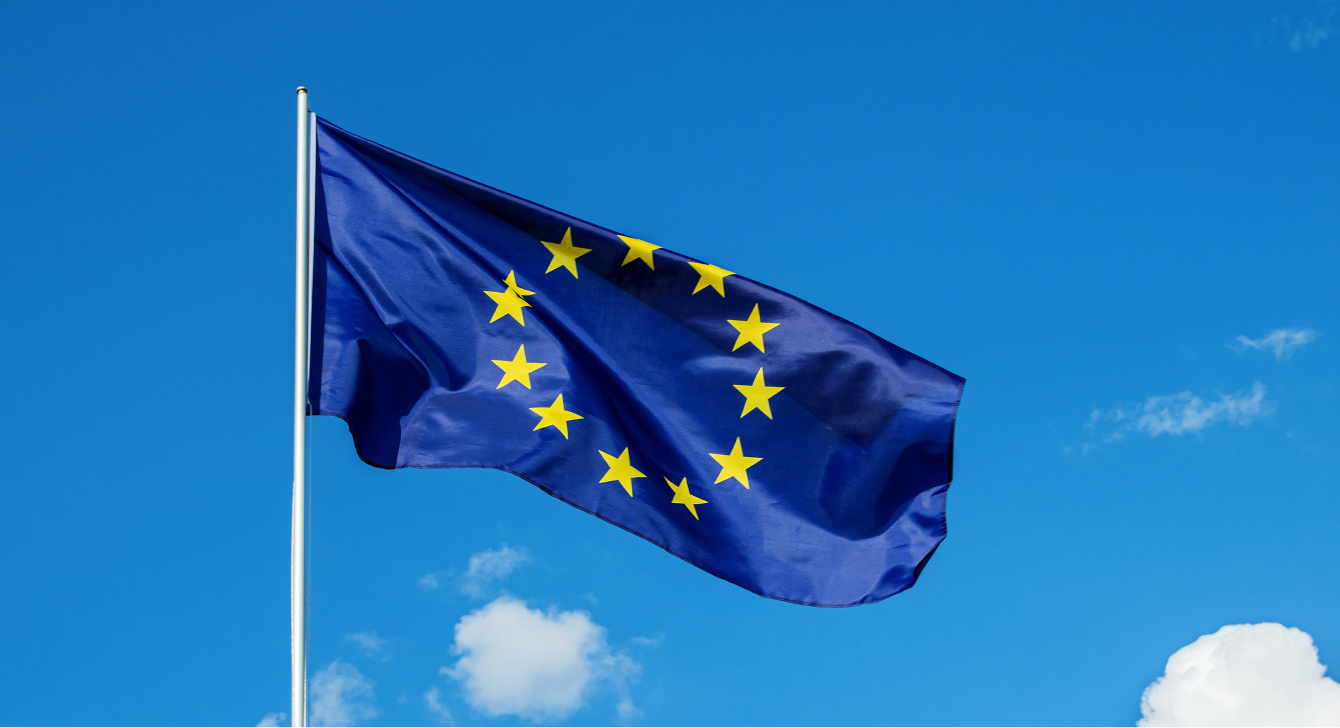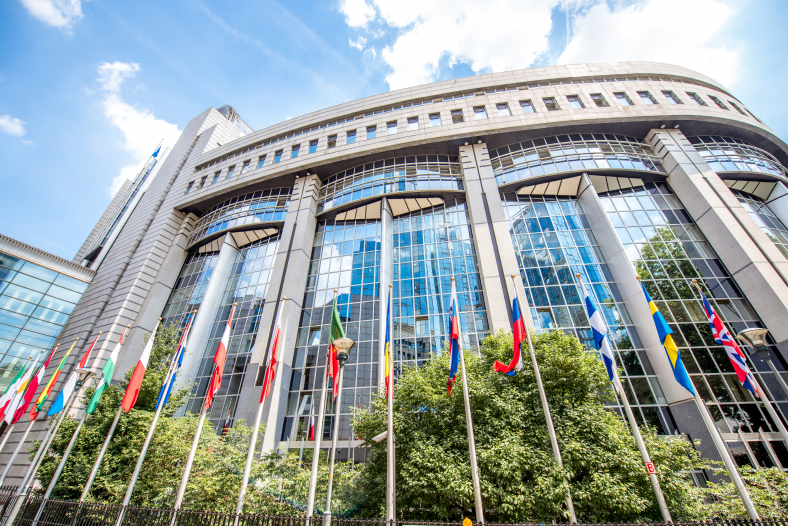What’s Next for the CSRD and the Omnibus Package in October 2025?
Table of contents
1. The European Parliament Rejects the Simplification Agreement: The “Omnibus” Reform Goes Back to Negotiation
2. A Legislative Process Once Again on Hold
3. CSRD: A Potentially Narrower Scope
4. CS3D: Possible Changes to Due Diligence Obligations
5. A Risk of Fragmentation in the Value Chain
6. Implications for Businesses: Between Uncertainty and Preparation
Autumn 2025 marks a major turning point for sustainability reporting in Europe. Less than three years after the adoption of the CSRD, the EU’s flagship framework for non-financial reporting is once again at the center of debate, this time driven by the Omnibus package, a reform introduced by the European Commission to “simplify” sustainability obligations.
However, the legislative process is still ongoing: the Omnibus package remains under discussion, and the proposed amendments currently debated could still evolve. They are therefore not final at this stage.
The European Parliament Rejects the Simplification Agreement: The “Omnibus” Reform Goes Back to Negotiation
On 22 October 2025, the European Parliament rejected the compromise position adopted a week earlier, on 13 October 2025, by its Legal Affairs Committee (JURI) concerning the Omnibus package, the reform intended to simplify the EU’s sustainability framework.
The vote (318 against, 309 in favor, and 34 abstentions) prevents the immediate opening of formal negotiations with the European Commission and the Council of the EU.
A new vote is scheduled for 13 November 2025. Depending on the outcome, the text could undergo significant adjustments, leaving companies uncertain about the actual scope of the future simplifications to sustainability reporting (CSRD) and due diligence (CS3D).
A Legislative Process Once Again on Hold
Presented in February 2025 by the European Commission, the Omnibus I package aims, subject to the final decisions of the Parliament and the Council, to ease the regulatory burden on companies while maintaining progress toward sustainable transition.
The proposal included, subject to final approval, a reduction of the CSRD’s scope, raising thresholds to 1,000 employees and €450 million in turnover, and simplifying the number of reporting indicators (from roughly 1,150 down to 350–450). This proposal, however, was rejected by the European Parliament on 22 October and may still evolve during further negotiations.
Adopted by the JURI Committee on 13 October by 17 votes to 6, these changes sparked mixed reactions. While presented as an administrative simplification, several stakeholders fear they could exclude thousands of companies from the directive’s initial scope and reduce transparency on environmental and social impacts.
The rejection on 22 October now sends the text back into internal parliamentary negotiation before any resumption of discussions with the Council and the Commission.
CSRD: A Potentially Narrower Scope
The draft adopted by the JURI Committee on 13 October proposed to significantly narrow the CSRD’s scope.
Only companies with more than 1,000 employees and over €450 million in turnover would, under the current proposals, be required to publish sustainability reports in line with European standards.
In practice, this could exempt thousands of currently affected companies, including mid-sized and large SMEs.
Possible consequences:
-
The systemic transparency logic established by the CSRD in 2022 could be weakened.
-
Reporting could become voluntary for medium-sized companies, based on non-binding guidelines developed by EFRAG, offered as an option rather than an obligation.
-
Sector-specific standards, long awaited to enhance the relevance of reporting by industry, could become optional.
In parallel, discussions include a reduction in mandatory indicators — from around 1,150 to 350–450. While this substantial simplification responds to business demands, it could reduce the granularity and comparability of reported data.
CS3D: Possible Changes to Due Diligence Obligations
The “due diligence” component of the Omnibus package (CS3D) follows the same streamlining logic.
The JURI Committee proposed to limit its scope to companies with more than 5,000 employees and €1.5 billion in turnover, compared to the initial thresholds of 1,000 employees and €450 million.
Another major change would be a risk-based approach, replacing systematic due diligence obligations. Companies would only need to assess their business partners when a specific risk is identified, thereby reducing the text’s preventive reach.
Finally, civil liability would remain determined at the national level, potentially allowing for regulatory divergence among Member States.
A Risk of Fragmentation in the Value Chain
The text also introduces a controversial restriction: large companies might no longer require ESG data from their partners if those partners are not themselves subject to the CSRD.
While presented as a way to reduce the burden on SMEs, this provision could, according to some observers, undermine the reliability of large groups’ reporting and fragment the value chain.
In seeking to protect smaller entities, the EU may inadvertently create regulatory blind spots, making it harder to assess overall impacts on climate, biodiversity, and human rights.
What Comes Next?
The 13 November vote will be a decisive step for the future of the Omnibus package.
Two scenarios are possible:
-
A return to a more balanced compromise, preserving the coherence of the EU’s sustainability framework;
-
A broader simplification, with potential impacts on the transparency and comparability of ESG data.
For companies, this period of uncertainty represents a key moment to strengthen internal practices, structure data systems, and anticipate different regulatory outcomes. Regardless of the final result, data reliability, traceability, and quality will likely remain central expectations from investors, regulators, and citizens alike.
Implications for Businesses: Between Uncertainty and Preparation
The rejection of the compromise and the postponement of the vote to 13 November 2025 create a period of uncertainty for European and international companies subject to CSRD and CS3D reporting. Despite the proposed simplifications, companies must continue to prepare in line with current CSRD and CS3D requirements.
Possible consequences:
-
Planning and timelines: Companies should continue preparations according to the current CSRD schedule while remaining ready to adjust their processes once final thresholds and indicators are adopted.
-
Data collection and management: Although the Omnibus proposals aim to reduce indicators and scope, maintaining data quality and traceability remains essential to ensure readiness for any regulatory changes.
-
Voluntary reporting for SMEs and mid-sized companies: Entities not subject to mandatory CSRD obligations will need to decide whether to publish voluntary reports to meet potential expectations from business partners and investors.
-
Value chain visibility: Limitations on ESG data collection from non-CSRD partners could reduce visibility over indirect impacts, even if they lighten the administrative load for SMEs.
Conclusion
The Parliament’s rejection of the compromise on 22 October 2025 and the postponed vote to 13 November 2025 maintain uncertainty around the final shape of the reform.
The Omnibus package seeks to ease the administrative burden on companies, but its final version will determine the actual extent of simplification for CSRD reporting and CS3D due diligence obligations.
Until a new text is adopted, the current CSRD and CS3D obligations remain fully in force and must be complied with.
In this context, companies would benefit from closely monitoring legislative developments and considering possible adjustments to their internal processes. Even if certain obligations become voluntary, maintaining visibility across the value chain and anticipating ESG data collection remain essential to ensure compliance and preserve transparency with investors and stakeholders.
Sources :
European Parliament: https://www.europarl.europa.eu/news/fr/press-room/20251016IPR30956/durabilite-et-devoir-de-vigilance-les-deputes-voteront-en-novembre
Share this
You May Also Like
These Related Stories

CSRD and the Omnibus Legislation: Release of the First Package, What Are the Initial Simplifications?

Navigating the EU Omnibus Simplification Package



